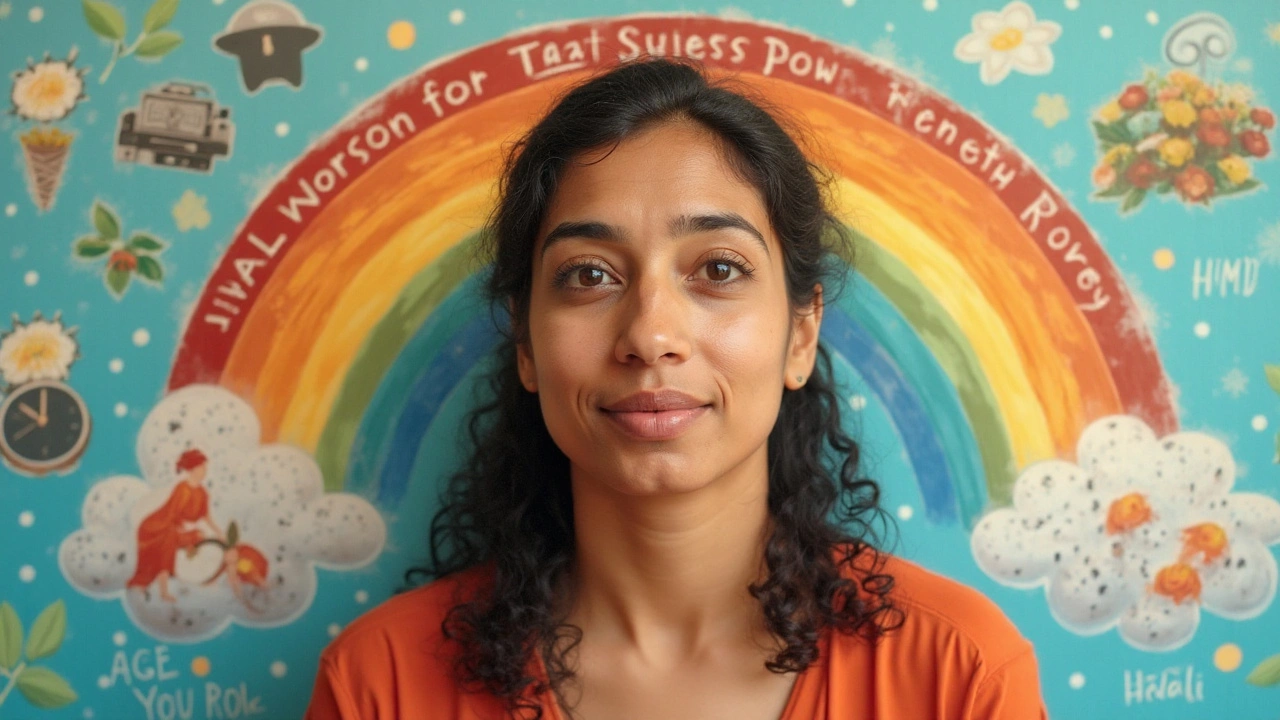
In Vitro Fertilization, commonly known as IVF, is a beacon of hope for many struggling with infertility. The journey to parenthood through IVF can be both thrilling and taxing, often leading individuals to wonder how many cycles it might take before success is achieved.
There isn't a single straight answer, as the number of IVF attempts necessary varies widely from person to person. Factors such as age, overall fertility health, and specific medical conditions play critical roles in determining outcomes. Alongside these, the emotional and financial investments can't be overlooked, adding layers of complexity to each decision made along the way.
In this article, we delve into the intricate world of IVF, exploring what influences its success rates and offering practical tips to potentially enhance the process. Whether you're just starting this journey or contemplating another round, understanding these nuances can make a significant difference.
- Understanding IVF and Its Process
- Factors Influencing Success Rates
- Emotional and Financial Aspects
- Tips for Improving IVF Outcomes
Understanding IVF and Its Process
In Vitro Fertilization, or IVF, is a medical marvel that has brought the joy of parenthood to millions. To truly grasp the essence of IVF treatment, one must first understand its complex yet fascinating process. It begins with ovarian stimulation. Women are administered hormone injections to stimulate the ovaries, encouraging the development of multiple eggs—a crucial step for increasing the odds of successful fertilization and embryo development.
Once the follicles reach an appropriate size, a trigger shot is given to induce the final maturation of the eggs. About 36 hours later, the eggs are carefully retrieved from the ovaries using a needle, guided by ultrasound. This procedure, though meticulous, is surprisingly brief and generally well-tolerated, offering only minimal discomfort. Retrieving multiple eggs maximizes the potential for pregnancy success, as not every egg will fertilize or develop into a healthy embryo.
In the lab, the collected eggs are introduced to sperm or injected directly with a single sperm through a technique known as ICSI (Intracytoplasmic Sperm Injection). Fertilization is monitored closely, and over the following days, fertilized eggs will begin to divide and develop. The embryologists watch these precious cells, waiting for the ideal moment to choose the strongest candidates for transfer back into the uterus.
The embryo transfer is a pivotal moment, typically occurring 3 to 5 days after egg retrieval. It involves placing one or more embryos into the woman’s uterus using a thin catheter, guided by ultrasound. The whole procedure is quick and usually painless, quite similar to a pap smear, ensuring minimal discomfort for the patient. While this lays the groundwork for potential pregnancy, what follows is a nerve-wracking two-week wait before taking a pregnancy test.
During this waiting period, questions loom regarding implantation success and whether the biological dance between embryo and uterus will result in a positive outcome. Success rates can vary significantly, influenced by factors like egg quality, sperm quality, and the woman's age. According to the Society for Assisted Reproductive Technology (SART), younger women generally have better success rates, with women under 35 having a live birth rate of around 40% per cycle, a number that declines as age increases.
"IVF has evolved significantly over the decades. With much research and technological advancements, it has become a standard offering for infertility treatment around the world," notes Dr. Jane Frederick, a leading fertility specialist.
The process, though intricate, is a testament to modern science’s ingenuity. Understanding each step demystifies the journey, highlighting the meticulous care that goes into creating life outside the human body. Those considering this path are not just investing in a possibility but engaging in a scientifically orchestrated journey that can ultimately lead to the fulfillment of the dream of parenthood.

Factors Influencing Success Rates
When considering IVF treatment, understanding the various factors that can influence success rates is crucial. One of the most significant factors is age. Women under 35 generally have higher success rates compared to those who are older. This is primarily because younger eggs have a better chance of being viable, leading to successful implantation and pregnancy. However, it’s essential to note that even if a woman is under 35, male partner factors, such as sperm quality, also critically affect outcomes.
Health conditions play another vital role. Conditions like polycystic ovary syndrome (PCOS) or endometriosis can complicate the IVF journey. These conditions might require additional treatments or interventions, potentially increasing the number of IVF cycles needed for success. It's also worth mentioning that lifestyle factors, such as smoking or a high body mass index (BMI), can decrease the likelihood of success. Optimizing one's health and maintaining a balanced lifestyle can positively impact IVF results.
Timing and the clinic’s quality also matter significantly. Different clinics have varied success rates due to differing expertise levels, technologies, and practices. According to a
CDC reporton fertility clinics, techniques vary, and so do the success rates from one clinic to another. Prospective parents should research their options, read reviews, and find a facility that not only has a high success rate but also fits their personal and emotional needs.
Additionally, the number of embryos transferred during treatment can affect success rates. A single embryo transfer might reduce the risk of complications like multiple pregnancies, which carry higher risks. However, transferring more than one embryo could increase the odds of achieving pregnancy, albeit with increased risks.
| Age Group | Success Rate |
|---|---|
| Under 35 | 41% |
| 35-37 | 31% |
| 38-40 | 22% |
| 41-42 | 12% |
Finally, previous pregnancies, whether successful or not, may provide indicators for IVF. Those who have had successful pregnancies before may experience higher success rates, pointing to factors beyond mere luck or chance. However, each cycle and each couple's situation is unique, reminding us of the complexity and intricacy of fertility treatments.

Emotional and Financial Aspects
Embarking on the IVF treatment journey can be a deeply emotional experience for many individuals and couples. It's a path filled with hope, yet it often comes with significant emotional ups and downs. The anticipation and anxiety surrounding each cycle can be overwhelming, as patients invest not just financially but psychologically into the process. Experts stress the importance of having a strong support system to help navigate these emotions. Friends, family, counselors, and support groups can all provide invaluable assistance, offering a listening ear and guidance. According to a study by the American Psychological Association, nearly 40% of women undergoing fertility treatments report experiencing symptoms of depression or anxiety.
On the financial side, the costs of IVF cycles can be substantial, creating an additional layer of stress. Each round of IVF can range from $10,000 to $15,000 or more, depending on the location and specific treatments required. This doesn't include the cost of medication, which can add several thousand dollars per cycle. Insurance coverage for IVF treatment varies widely, with some plans offering partial coverage and others providing none at all. This factor can significantly limit the number of cycles a person is able to pursue, and it might even influence their decision on whether to try IVF at all. Financial planning, possibly with the assistance of a financial advisor, can help manage these expenses. Programs such as IVF grants and financing options are available, but they require diligent research and often have specific eligibility criteria.
Balancing Emotions and Finances
Balancing the emotional and financial demands of IVF is no easy task, and for many, it's a learned skill developed through the process itself. Setting realistic expectations and boundaries is crucial; understanding that success might not come immediately can alleviate some of the pressure. Couples are encouraged to have open, honest discussions about their emotional states and financial limitations, so that decisions can be made jointly and compassionately. Building a financial safety net or exploring alternative funding options early can reduce stress and allow for a more focused, hopeful approach to each cycle. Couples who have undergone IVF often report that careful planning, clear communication, and strong emotional connections were vital in maintaining resilience throughout their journey.

Tips for Improving IVF Outcomes
Each journey through IVF treatment is unique, with prospective parents often searching for methods to bolster their chances of success. There are several practical steps one can take to potentially improve outcomes. First and foremost is maintaining a healthy lifestyle. This involves a balanced diet rich in antioxidants, vitamins, and minerals, which can promote better reproductive health. Foods such as leafy greens, nuts, and whole grains are excellent choices. Additionally, regular exercise, tailored to your individual health profile, can enhance blood flow and reduce stress, which are both crucial during IVF cycles. Mind-body interventions like yoga and meditation have been shown to assist in stress management, which is a significant component in the success of fertility treatments. A relaxed mind often nurtures a more receptive body.
Partnering with a Reputable Clinic
Choosing the right fertility clinic and doctor is pivotal. Researching clinics with high success rates and extensive experience in IVF cycles can make a significant difference. It’s advisable to inquire about the clinic's approach to personalized treatment plans, which consider the individual's specific needs and medical history. Some clinicians, like Dr. Alice Domar, have asserted,
"Patients who engage in the process and understand their treatment tend to navigate the emotional turmoil with more stability."This highlights the importance of patient involvement in the treatment process.
Understanding Emotional Preparedness
Fertility treatments can be emotionally taxing, so emotional readiness should not be underestimated. Couples benefit from seeking support groups or counseling services, which provide a space to share experiences and emotions. Listening to others who have traversed the same path can offer valuable insights and lessen feelings of isolation. It’s important to recognize and address emotional well-being as part of the treatment plan, as a positive mental outlook can positively influence physical outcomes.
Financial Aspects and Planning
Financial preparedness is another critical area. Given that multiple IVF rounds could be necessary, creating a financial plan will help manage the costs associated with fertility treatments. Investigating insurance options and potential financial assistance programs can ease some of the financial burdens. Some couples find value in speaking with a financial advisor to plan expenses and explore avenues for funding, which can alleviate stress and allow them to focus more on the treatment.
Leveraging Technological Advancements
Considering technological advances in IVF treatment can also influence success rates. Innovations such as preimplantation genetic testing (PGT) help in identifying viable embryos, potentially reducing the number of cycles required. Engaging with clinics that offer such advanced technologies and staying informed about ongoing research in reproductive technologies can provide better guidance on available options. In a recent study, clinics that employed advanced genetic screening reported a substantial increase in their success rates, reflecting the importance of integrating new technologies into treatment plans.







